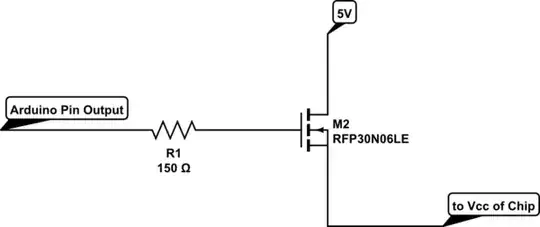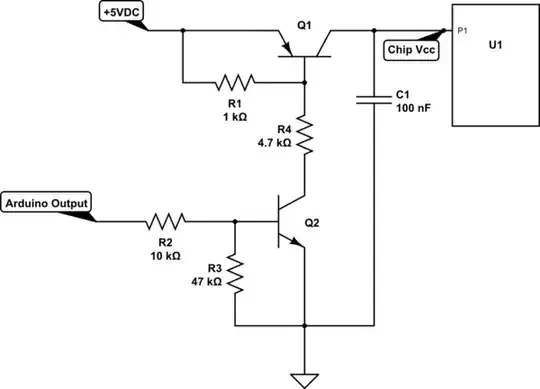Many datasheets are severely underspecified with regard to such issues. Some devices will explicitly specify that pins can have voltage applied whether or not VDD is powered, but on most devices there is some sort of inherent diode or transistor structure which will clamp pin voltages to VDD. If the presence of a diode would prevent a circuit from meeting requirements when power is cut, and the chip doesn't specify that a pin can have voltage applied without VDD, the chip cannot be presumed to meet such requirements. In cases where a diode would not prevent a circuit from meeting requirements, most chips will generally meet those requirements. Unfortunately, "most" does not mean all, and data sheets seldom provide guidance sufficient to know what will work in any particular case.
Generally, there is some amount by which a pin voltage can exceed VDD without any effect whatsoever. No current will flow from the pin to VDD, and no other aspect of device operation will be affected. If the voltage exceeds VDD by more than some amount, current will flow somewhere. If the current flowing into the pin is externally limited, there will be some amount of current below which no aspect of device operation will be affected.
In practice, it should be possible to specify many things about a device:
If the voltage on a pin is kept below some threshold, no excess leakage currents will flow anywhere.
If the current into a pin is limited to a certain amount, leakage will be limited to certain paths and will not affect device operation (except that if some of those paths are to other pins, the leakage may affect operation of whatever is attached to those pins).
If current is limited to a certain [likely higher] amount, it will not cause damage to the device but may disrupt operation.
4-5. If the voltage on a pin is kept below some thresholds [which would likely be higher than #1] the current may exceed the values given for #2 or #3, but will not be high enough to disrupt operation (#4) or damage the device (#5).
Unfortunately, manufacturers seldom provide such detailed specs. In many cases, all they give is spec #1, which is in many situations the least useful. If chips could specify parameters #2 and #4, that would make it possible to construct input-protection circuits with series resistors and/or clamp diodes and know that they were specified to work correctly.
Incidentally, leakage into pins on an unpowered microcontroller which is insufficient to damage it or power it successfully will often be sufficient to prevent the micro from reliably resetting in the absence of a brown-out circuit or external reset logic. When cutting power to a microcontroller, it's often good to ensure that its reset line will get pulled low; you may be able to share the same I/O control pin for the reset and the power-enable if the reset is active low and the power-enable is active high.


